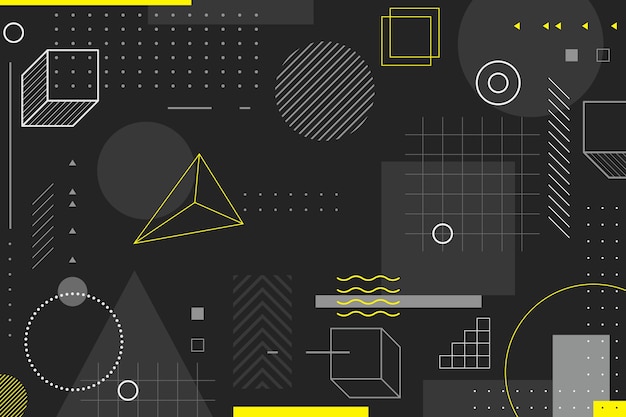The design elements are the foundations of what a visual artist or graphic designer uses to create a successful composition.
These elements work in pari passu with each other. They are the foundational elements guiding the design world.
What are the Design Elements?
Elements of Design.
Differences between Elements and Principles of Design.
This article will broaden your mind and perspective on design. Let’s dive in and learn these elements.
What are the Design Elements?
Table of Contents
The fundamental aspects of any visual design are the elements of design, which include shape, colour space, form, line, value, and texture.
Graphic designers use design elements to create images that can convey a mood, draw the eye in a specific direction, or elicit a variety of emotions.
While the elements of design are the foundation of any image, designers also rely on design principles, which are a set of practices for working with design elements that make a composition visually appealing.
Elements of Design
There are numerous graphic design elements to consider when creating any visual work of art, whether it is for interior design, a logo, an advertisement, or web design. The fundamental design elements are as follows:
Color:
Color contributes to the mood of your composition. Color is the sensation that a human perceives when light waves strike an object and reflect back to the optic nerve in their eyes. Color is used by artists and designers to depict and describe their subjects.
Color is used by designers to convey mood, light, depth, and point of view. Color schemes are created by designers using the color wheel and the tenets of color theory (a set of guidelines for mixing, combining, and manipulating colors).
Line
A line is the path that two points in space take to connect them. Lines, whether horizontal, diagonal, or vertical, can help direct the eye toward a specific point in your composition.
Texture can also be created by using different types of lines, such as curved or patterned lines, rather than just straight lines.
Value:
In design, value refers to a color’s lightness or darkness. A color’s values are frequently represented by a gradient, which shows a series of variations on one hue, arranged from lightest to darkest.
Color values can be used by artists in their work to create the illusion of mass and volume.
Space:
Making good use of space can help others see your design as you intended. The space between or around an image’s focal point is referred to as white space or negative space.
Positive space is the space that your subject matter occupies in your composition. The spacing of your design is important because an overcrowded layout can overwhelm the viewer’s eye.
Shape:
A shape, in its most basic form, is a two-dimensional area surrounded by an outline. Other elements, such as line, color, value, and shadow, can be used by graphic artists to give a shape the appearance of being three-dimensional.
Shapes are of (3) types: Organic shapes, Geometric shapes. Organic shapes occur naturally in the world. Geometric shapes are angular and mathematically consistent. While Abstract shapes represent things in nature but aren’t perfectly representative.
Form:
Form is concerned with how a shape or physical configuration occupies space. Designers create the appearance of form on a flat surface by using light, shadow, the appearance of an object’s contours, negative space, and the surrounding objects around the subject matter. Rather than creating form through a three-dimensional physical shape.
Texture:
Texture is a design element that is used to represent how an object appears or feels. Tactile texture is a physical sense of touch that can be rough, smooth, or ribbed.
Visual texture, on the other hand, refers to the imagined feel of the illustrated texture. Which can increase visual interest and provide a more heightened sensory experience.
Differences between Elements and Principles of Design.
The basic building blocks of any composition are referred to as design elements. The design principles however, refer to how these elements are used. Such as symmetrical and asymmetrical balance, pattern, emphasis, movement, and proportion. The design principles are a set of fundamental rules and techniques for composing the various design elements.
These elements spelled out should be your design guide. Your designs will thank you if each step is followed adequately. Funnily, these Design Elements are seen in our everyday lives.
Conclusion
Now, you have known what the design elements are. How they affect your designs as a Graphic Artist or Designer. What these elements mean and the difference between a design element and a design principle.
You can now make better design choices. You can also check out the Top 10 Graphics Designing Tools in 2022



